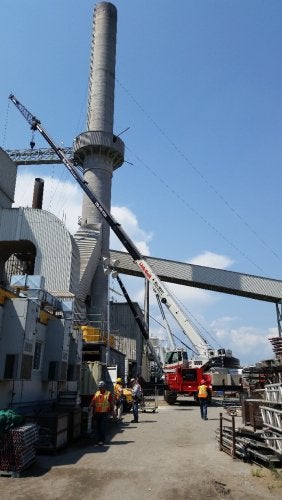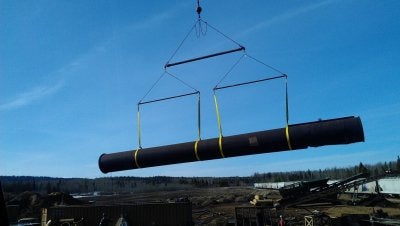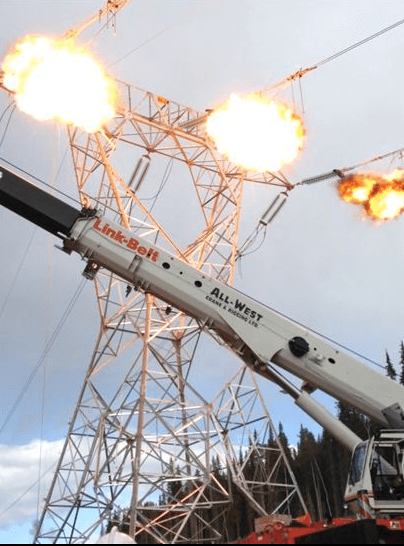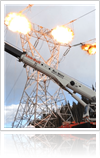One of the most essential tasks a crane operator will be responsible for is the lifting and rigging of different materials. These materials need to be lifted off the ground and raised to different elevations based on the type of project. It is vital the operator understand the basics of crane rigging and how lifting materials at different angles will have a direct impact on the type of crane and rigging equipment required.
This extends beyond knowing how to connect rigging to the crane. The operator must be fully aware of how the crane functions, its maximum load limits, and other such factors. The crane itself must also be in proper working order without any defects. Otherwise, if there is a lack of operator skill or equipment performance, it can lead to serious, costly, and dangerous accidents.
 What Is Crane Lifting & Rigging Used For?
What Is Crane Lifting & Rigging Used For?
Lifting and rigging are most commonly performed with portable or mobile cranes. These can be all-in-one cranes, where the crane is housed on the back of a large truck-like vehicle or is its own portable vehicle.
Some models are also semi-permanent installations, where the crane is transported to the job site, and then set up in a particular location where it will provide the most benefit. For instance, on high-rise construction projects, a Spyder crane could be temporarily set up on the uppermost floors of the structure and moved periodically as the height of the building increases.

The primary function of lifting and rigging is to transport essential equipment and materials into locations where they are easily accessible for workers. This process helps eliminate the risks of having to manually transport equipment and materials up scaffolding, which can be difficult and dangerous.
Furthermore, lifting and rigging are designed to lift extremely heavy loads that would otherwise be impossible to perform manually. To illustrate, a heavy portable generator needs to be lifted up ten floors where workers can use it to provide power. Transporting the generator manually is not feasible due to the weight of the generator.
In addition, the generator must be rigged correctly to allow for offsets in load-bearing limits that change based upon the angle of the generator as it is lifted up ten stories. In our example, using a mobile crane would be the best solution. The crane could easily lift the generator after it was correctly rigged and connected to the crane.
Basic Crane Lifting & Rigging Safety Tips
Lifting and rigging require following the proper safety procedures to maintain a safe working environment. For construction companies that own their own cranes, it is imperative that regular maintenance is conducted to ensure all components, including the lifting mechanism, are in proper working order.
Where companies choose crane rental services for projects, they need to use a reputable and reliable company. It is perfectly acceptable for the project manager or person responsible for procuring the crane to request maintenance records to show the crane has been well-maintained.

Whether your own your own crane or rent one, once you have it on the job site the next safety precaution is to verify it is set up correctly before lifting anything. Mobile crane trucks must be supported properly to prevent them from tipping over due to changes in the center of gravity as materials and equipment are lifted and moved.
The supports are often part of the crane truck and can be extended and lowered into place. Before deploying supports, called out-riggers, the crane should be parked on a level and solid surface. The out-riggers also must be on solid ground to prevent the crane from tipping over or sinking into the soft ground. There have been accidents in the past where the crane was not level or the surface on which it was parked was not solid.
After verifying the crane is properly parked, supported, and configured, the next safety precaution is to determine the most appropriate rigging method to use. There are different types of sling and hitch configurations one could use, based on the type of lifting required, as follows:
- Basket Hitching – This method is where each end of the sling is secured to the crane’s hook. It helps prevent added tension on the load. Depending on the size of the object being lifted, a single or double wrap sling configuration could be used. However, this method is not so great to use for objects that are hard to keep balanced.
- Choker Hitching – In this method, the sling is wrapped around the object and then tightened to secure it in place. This type of lifting is well-suited for large cylinder objects, although they should be lifted one at a time, not in loose bundles.
- Vertical Hitching – This method is where one end of the sling is secured to the crane and the other to the object to be lifted. Yet, one common problem is the object can start to spin and rotate freely when it is lifted, so this method is almost never used with a crane. Variations using other methods can be utilized to make vertical lifting safer and more secure.
Once the rigging method is determined, the next thing the operator will need to know is the weight of the materials or equipment to be lifted. Slings have maximum weight stress limits. Exceeding these could cause the slings to snap and break, allowing the object to free fall to the ground below.

The operator also must understand that, as the angle changes, the maximum stress limits also change, creating even higher weight limits on the rigging. To illustrate the effects, let’s look at how the maximum weight stresses change:
- 90 degrees (vertical lift) – At this angle, the weight is equally distributed, so, if you had to lift a 1,000-pound object and used a dual-configuration with two slings, each rated with 500-pound limits, it would be safe to lift the object.
- 60 degrees – At this angle, the effectiveness of the slings is reduced to 86.5% of the maximum load limits. In other words, each sling now only supports 432.5 pounds maximum, or a total of 865 pounds. So, it would not be safe to lift a 1,000-pound object.
- 45 degrees – At this angle, the effectiveness of our dual-sling configuration is reduced to 70% of the maximum load limits. Now each sling can only support 350 pounds or 600 pounds total. Again, it would be dangerous to lift a 1,000-pound object.
As you can see, as the degree of lift changes, the load-bearing stresses decrease. As a result, using our example, higher-rated slings or additional slings would be required to safely lift this load.
Please keep in mind, these are just general examples for reference purposes only, and other factors can affect load stresses. It is your responsibility as an operator to educate yourself and learn how to properly calculate load limits and stresses to ensure safe crane rigging and lifting.

Why Choose All-West Crane & Rigging, Ltd. for Construction Projects?
At All-West Crane and Rigging, Ltd., we provide all our clients’ access to our 3D lift planning services. This value-added service helps you develop the appropriate plan for best utilizing the right crane and rigging for all materials, equipment, and objects you need to use.
Plus, it can help you determine what type of rigging is required so you do not exceed maximum lifting weights and tolerances. The plan can be customized to suit your needs to include:
- A 3D representation of the job site.
- The weight of every item you need to lift.
- The dimensions of every item you will lift.
- The location of potential lifting obstructions and their dimensions.
Additionally, we provide access to a wide array of different well-maintained cranes and other support equipment. We also take care of transporting the cranes and equipment to your job site. If you are interested in purchasing your own cranes, we even offer cranes for sale.

To get started on planning your project by taking advantage of our 3D lift planning service, or for further information about crane rentals , please feel free to contact All-West Crane & Rigging, Ltd. at 877.203.0069 today! Our services are available throughout British Columbia and Alberta.

